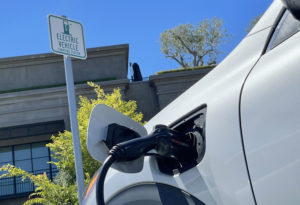If you have any interest in clean energy or solar panel incentives, you probably know by now that the Federal Government has passed the Inflation Reduction Act (IRA). The IRA is a $369 billion investment for climate justice and clean energy making it one of the most significant climate bills in history. And for us in solar, we think it is a pretty big deal.
The act was passed in the Senate on August 7th with a 50-50 split wherein Vice President Kamala Harris made the final vote. It was again passed in the House on August 12th by a 220-207 margin and signed by President Biden on August 16, 2022.

Overall, the act will cover benefits for both the country and the people. From an energy perspective, it will aim to lower costs, strengthen our energy security, and advocate for environmental justice. Biden also proposed that 950 million solar panels and 2,300 grid-scale battery plants to store clean energy will be operational by 2030. Doing so will create more good-paying jobs in the clean energy field. Lastly, he proposed rebates for efficient appliances and home upgrades, an updated 30% tax credit to install solar panels, and a tax credit for electric vehicles. The bill also includes other important benefits related to healthcare and other sectors of clean energy.
The reaction in the world of solar has been nothing but positive. SOLV Energy stated, “The Inflation Reduction Act of 2022 takes serious action to grow the clean energy economy, puts more money in the pockets of American families, and gets us one step closer to tackling the damaging impacts of climate change.” Qcells, one of our panel manufacturers said: “we’re a major step closer to turning the climate crisis into a once-in-a-generation opportunity.” With the passing of the IRA solar is no longer on the “bleeding edge”, but will be the new normal.
Here are just a few of the benefits you’ll reap:
1. The US inches further towards the 40% carbon emissions reduction goal.
According to Energy Innovation, it’s predicted that greenhouse gas emission will be reduced significantly below 2005 levels. This can be achieved through direct incentives for solar, electric vehicles, and other energy efficient home appliances.
 2. American homes can save thousands of dollars on efficient electric alternatives.
2. American homes can save thousands of dollars on efficient electric alternatives.
As stated before, the IRA offers homeowners a path to “fossil-free” energy savings by providing tax incentives and rebates to invest in electric vehicles, electric home appliances, and installing solar. And because these investments reduce a household’s monthly energy bill they pay for themselves over time!
3. Speaking of solar panel incentives, the ITC is going up to 30%!
The solar tax credit was increased to 30% and will stay there for 10 years! This new higher rate is even retroactive to any system completed after December 31, 2021! (Eliminating the up and down seesaw of the solar tax credit we’ve seen over the last 10 years will do wonders for the industry and its customers.)
4. Thousands of lives will be saved by reduced air pollution with incentives for EV’s.
 According to AmericanProgress.org, the reduction in air pollution through the implementation of the IRA can save up to 4,000 lives per year in 2030. One of the larger drivers behind this air pollution reduction is the incentives to purchase electric vehicles as they eliminate the harmful emissions that come from cars.
According to AmericanProgress.org, the reduction in air pollution through the implementation of the IRA can save up to 4,000 lives per year in 2030. One of the larger drivers behind this air pollution reduction is the incentives to purchase electric vehicles as they eliminate the harmful emissions that come from cars.
5. Many more jobs will be available in the Energy Sector.
Energy Innovation stated the clean energy tax credits and manufacturing incentives are projected to create 1.5 million construction, manufacturing, and service jobs in clean energy by 2030. And more importantly, these are not temporary jobs, as the task ahead of us is large and long lived.
All in all, the Inflation Reduction Act is one of the best things that could have happened for solar. We are pleased to hear Biden signed it into law and are excited to see the future changes in the clean energy industry.
If you liked this article, you may also like:
How Your Home With Solar Panels Can Charge Your EV





2 Responses to “5 Benefits of the Inflation Reduction Act for Solar”
Great article!
Thank you!
The comments are closed.